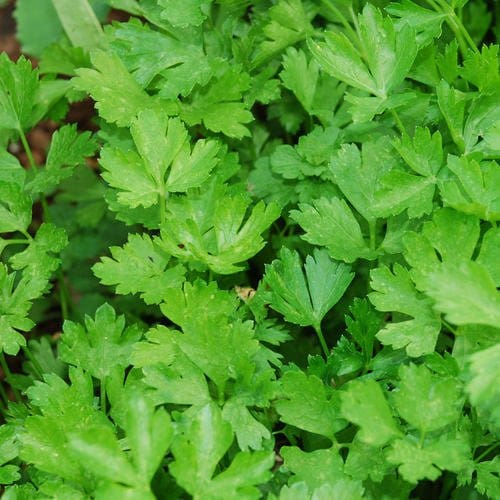
Parsley
Parsley, often seen as a mere garnish, is in fact a versatile herb with a rich culinary history and a refreshing, mildly peppery flavour. Belonging to the Apiaceae family, parsley is native to the Mediterranean region and has been used for centuries in both cooking and traditional medicine. There are two main varieties: curly-leaf and flat-leaf, the latter also known as Italian parsley and prized for its stronger taste.
This vibrant green herb is a staple in countless cuisines. From European and Middle Eastern dishes to South American chimichurri and North African tabbouleh, parsley adds a fresh lift to sauces, salads, soups, and stews. It’s especially good when finely chopped and stirred into dishes just before serving, where it brings a burst of brightness that complements meat, fish, and vegetables alike.
Beyond its culinary use, parsley is packed with nutritional benefits. It’s rich in vitamin K, which supports bone health, and a good source of vitamins A and C. Parsley also contains antioxidants such as flavonoids and carotenoids, which may help combat inflammation and support the immune system.
In the kitchen, parsley is incredibly easy to use. It can be added raw, cooked gently, or blended into sauces like gremolata, salsa verde, or pesto for a herby kick. While curly parsley is often used for decorative purposes, don’t underestimate its flavour, especially when used in large amounts. Flat-leaf parsley, however, remains the chef’s favourite for its clean, slightly earthy profile.
To keep parsley fresh, store it in the fridge with the stems in a glass of water and loosely covered. Better yet, grow your own in a sunny windowsill or garden pot for a steady supply.
Parsley may be humble, but it’s undoubtedly a kitchen essential — one that adds both taste and vitality to everyday cooking.
